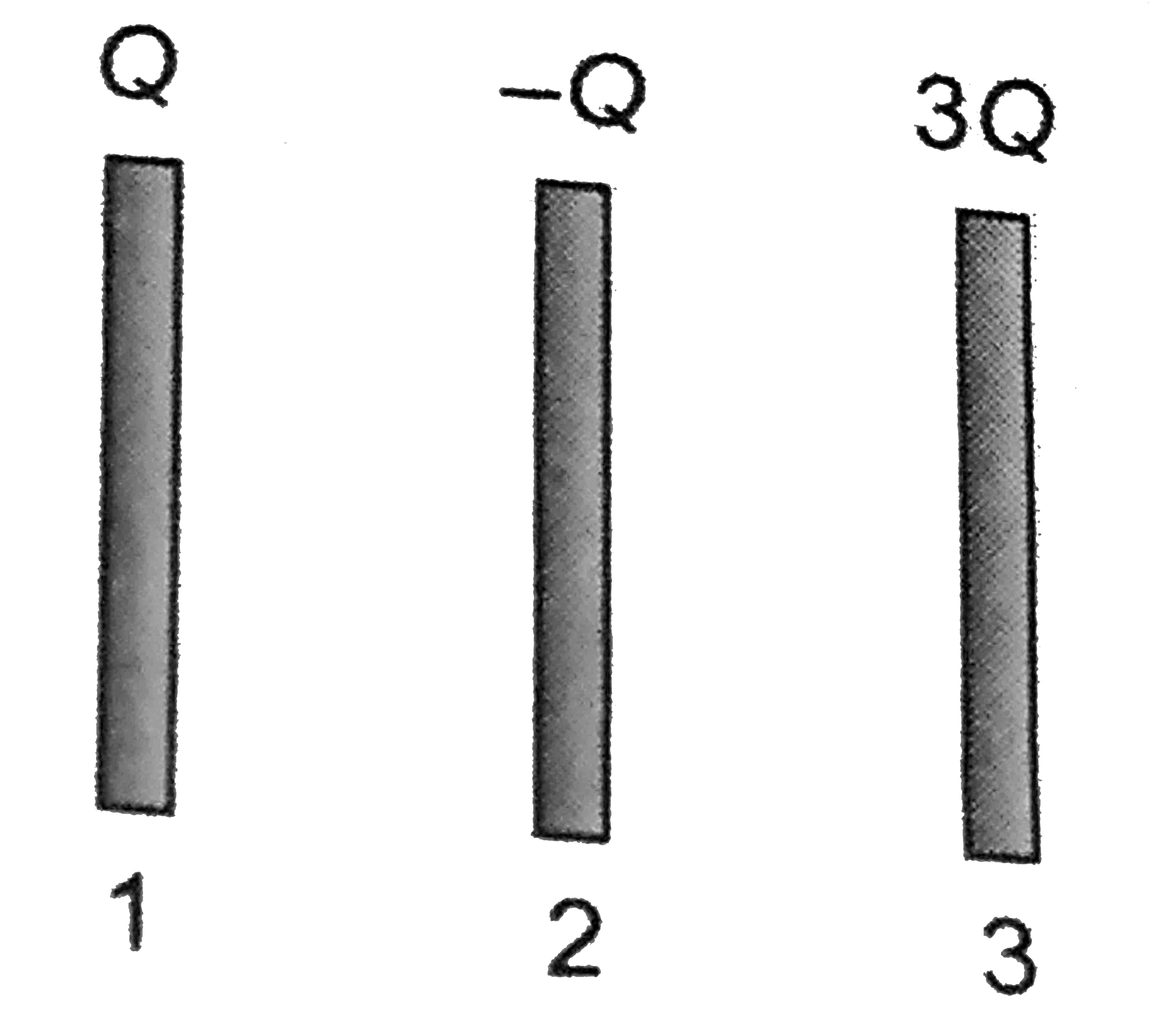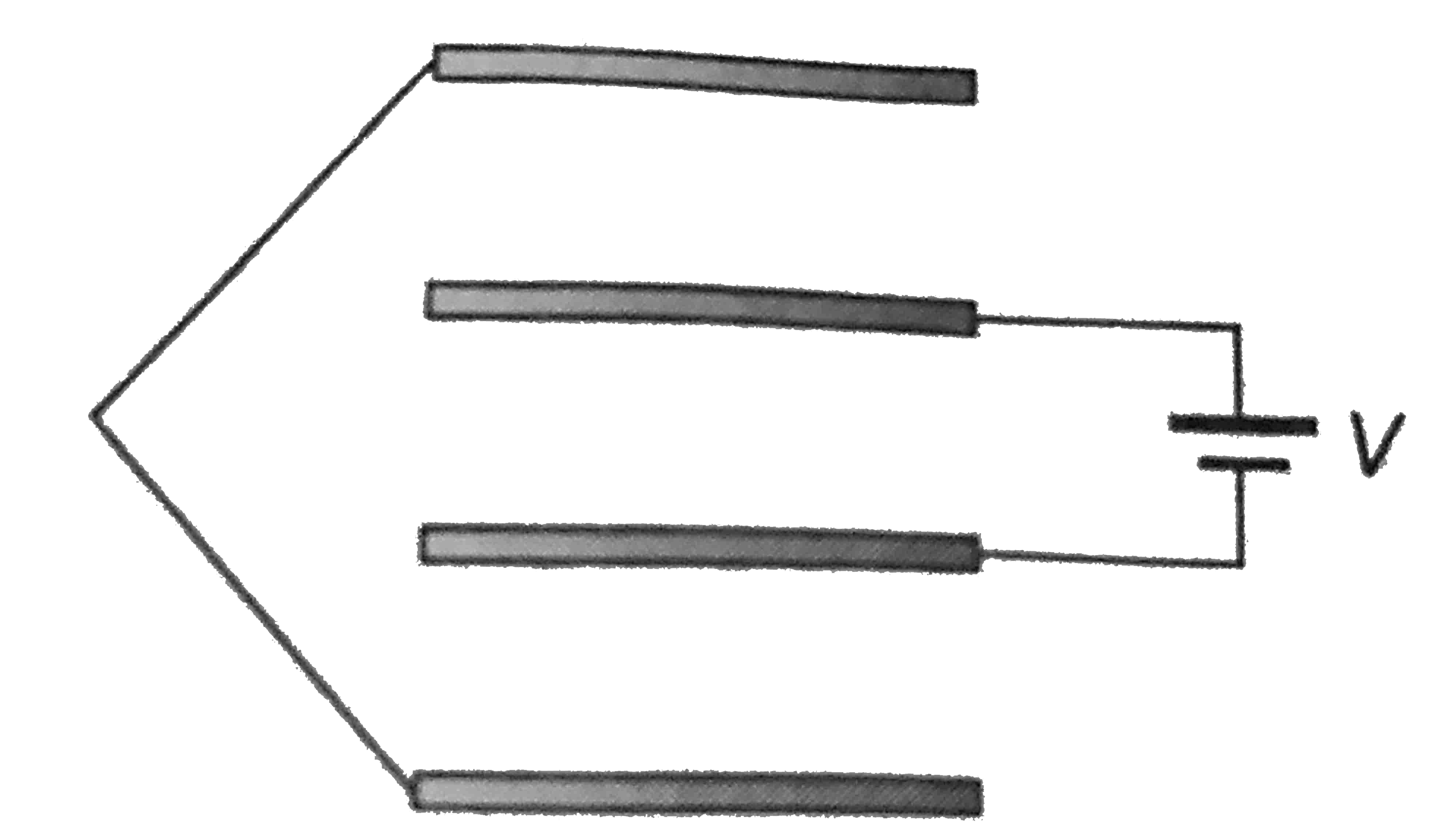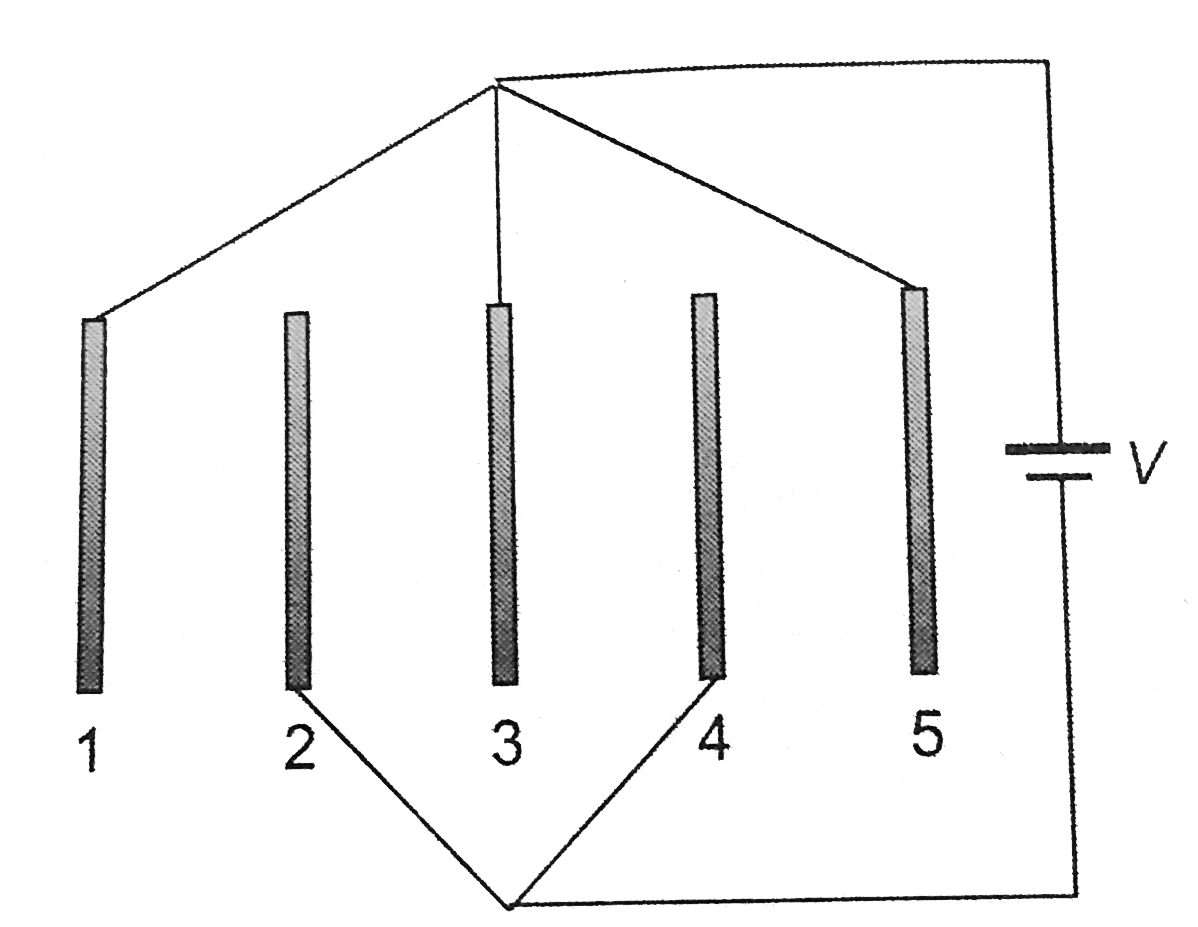A potential difference is applied between a conducting sphere and a conducting plate C'plus" on the sphere and "minus" on the plate). The dimensions of the plate are much larger than the distance between sphere and plate. A, point positive charge. is moved from P?int 1 to point 2 parallel to the plate. Is any work dono In the process?
Step by step video & image solution for A potential difference is applied between a conducting sphere and a conducting plate C'plus" on the sphere and "minus" on the plate). The dimensions of the plate are much larger than the distance between sphere and plate. A, point positive charge. is moved from P?int 1 to point 2 parallel to the plate. Is any work dono In the process? by Physics experts to help you in doubts & scoring excellent marks in Class 12 exams.
Updated on:21/07/2023Topper's Solved these Questions
Similar Questions
An electric dipole is positioned between a pointlike charge and a uniformly charged conducting plate. III which direction will the dipole move?
View Solution(a) Find the potential difference between the plates of a parallel plate capacitor of capacitance 5μF if a charge +800μC is placed on one plate and-200μC on another plate.
(b) The charege given to plate are as shown. The capacitance between the adjacent plates is C. find the charge on outer surface of plate 3, and potential difference between plate 1 and 2.
(c) If A is area of each plate and d is separation between adjacent plates, find the charge supplied by battery.
(d) Five idential capacitor plates each of area A are arranged such that adjacent plates are at a distance d apart. the plates are connected to a source of emf V as shown. what is the magnitude and nature of charge on plates 1 and 3 respectively?



View Solution
Knowledge Check
If A is the area of each plate, charge on it is q and potential difference is V then the distance between the parallel plate capacitor is
Aε0AV2qBε0AVqC2ε0AVqDAVqThe force between the plates of a parallel plate capacitor of capacitance C and distance of separation of the plates d with a potential difference V between the plates, is.
ACV22dBC2V22d2CC2V2d2DV2dCEach of two large conducting parallel plates has one sided surface area A. If one of the plates is given a charge Q whereas the other is neutral, then the electric field at a point in between the plates is given by
AQAε0BQ2Aε0CQ4Aε0DZero
Into the region of space between the plates of a parallel-plate capacitor there Ilies (a) an electron and (b) a negatively charged ion with a velocity directed parallel to the plates. Both the electron and the ion have rec.eived their initial kinetic energy by passing the same potential difference U0 and the potental difference across the capacitor is U. The distance between the plates is d. Which of the two particles will travel a greater distance before hitting the positively charged plate if both fly into the capacitor at a point that is exactly in the middle of the distance between the plates?
View SolutionForce between two conducting large plates , with charges Q and Q2 as shown in the figure, is (Area of each face of plate =A)
_PHY_E01_022_Q01.png)
View SolutionFind equivalent capacitance between points A and B. [Assume each conducting plate is having same dimensions and neglect the thickness of the plate ε0Ad=7μF where A is area of plate]<imga≤ocr_imageload∈g=lazysrc=https://d10lpgp6xz60nq.cloudfront.net/physics_images/DCP_VOL_4_C25_E01_045_Q01.pngwh=80%mx-autosty≤=background:white;>
View SolutionElectric potential difference between the positive plate and halfway point between the two parallel plates of a fully charged capacitor is
View SolutionThe force between the plates of a parallel plate capacitor of capacitance C and distance of separation of the plates d with a potential difference V between the plates, is.
View Solution
